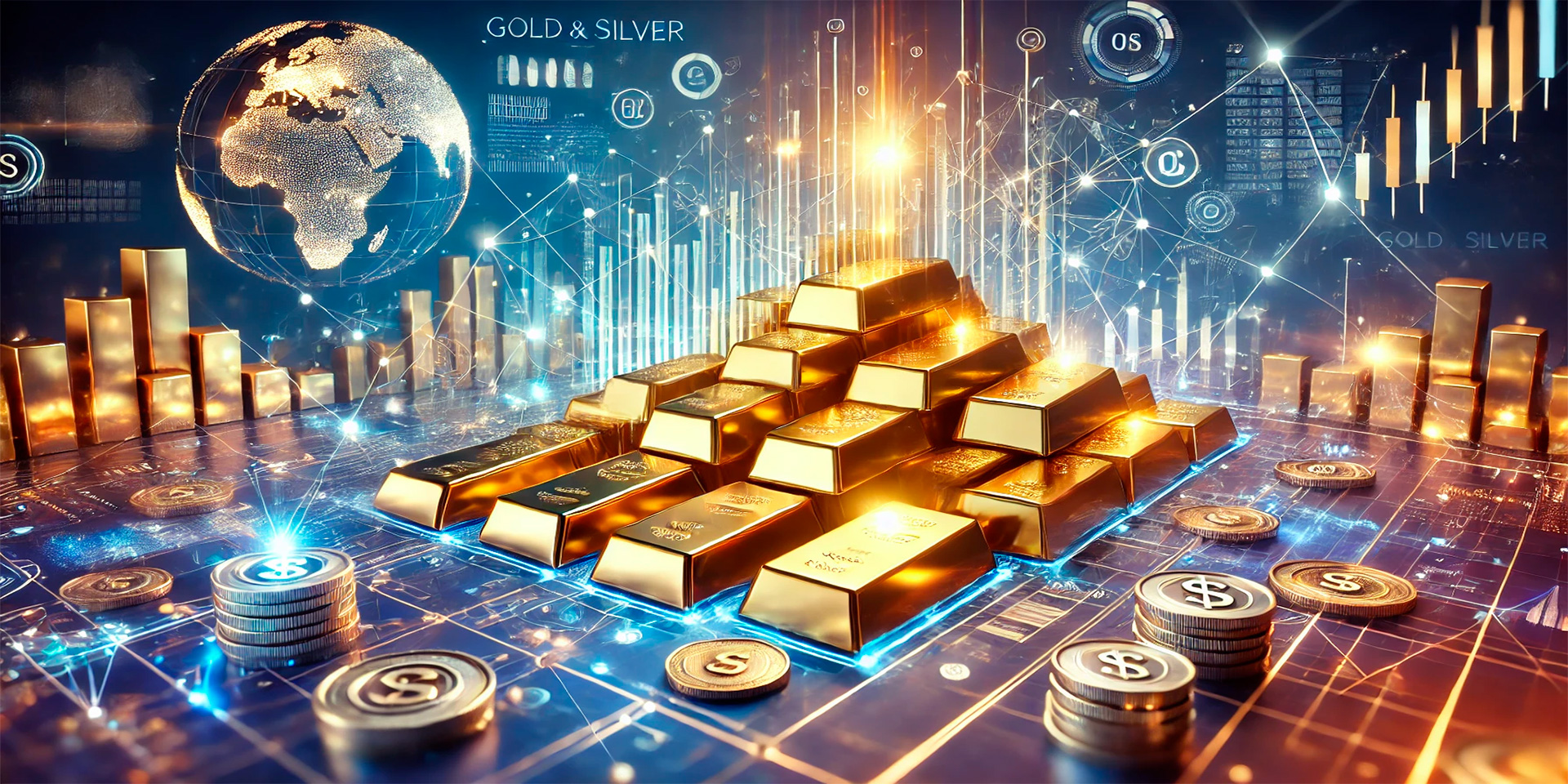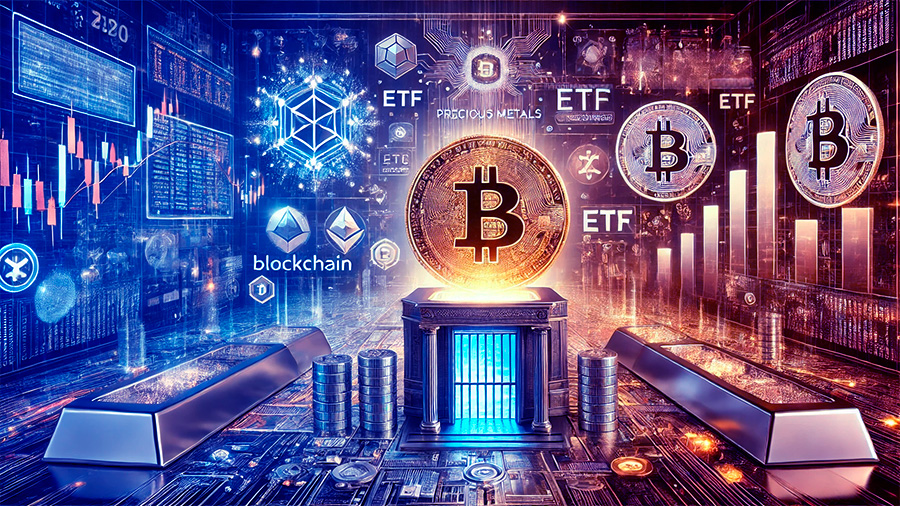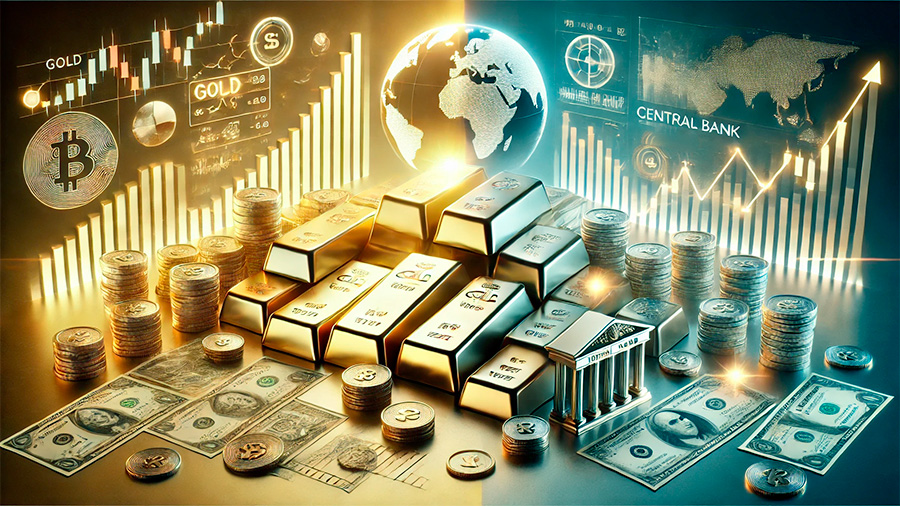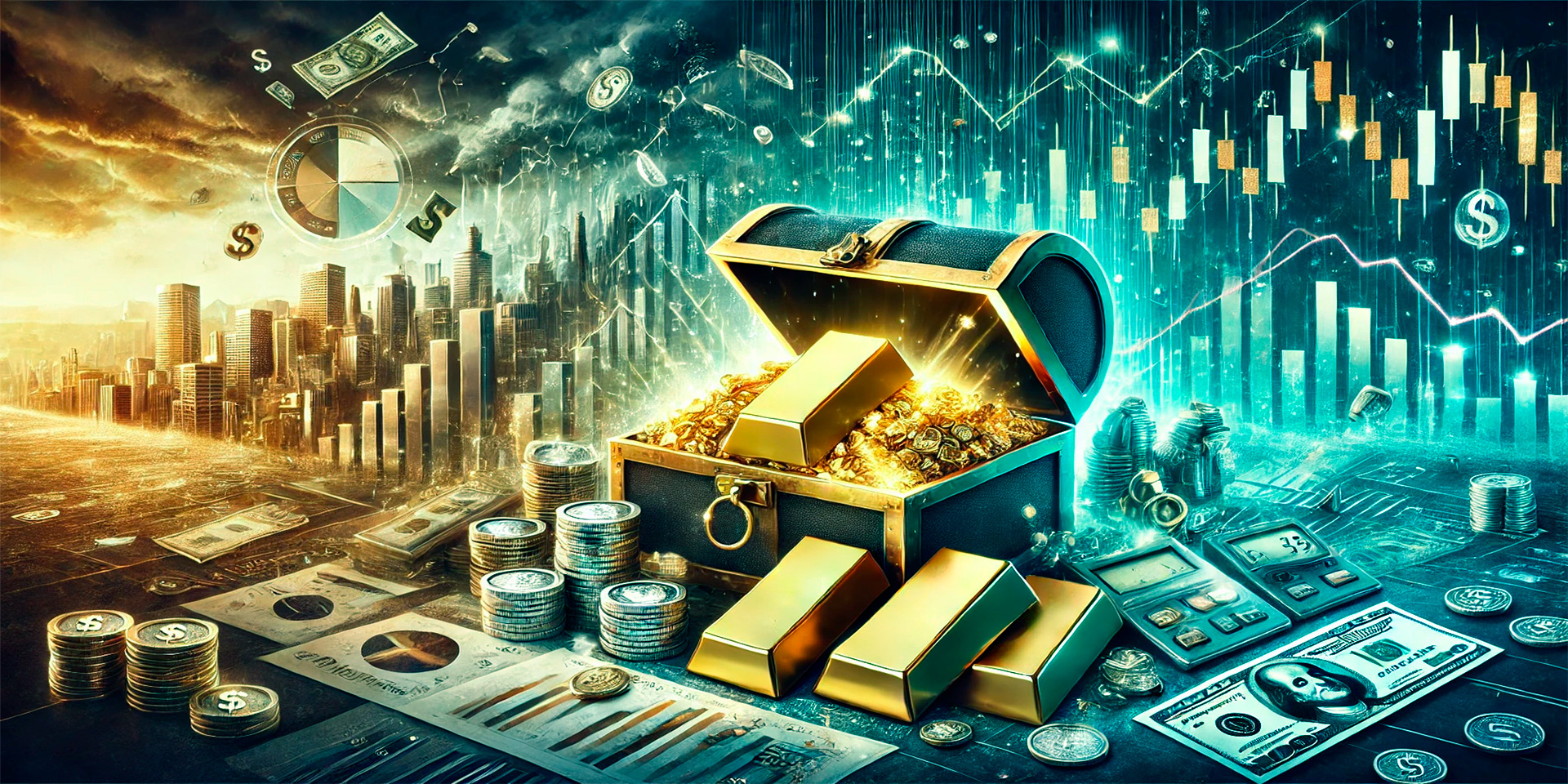
Precious metals, especially gold and silver, have long played an integral role in the global financial system. These metals are not only considered valuable assets but also serve as critical components that provide stability and growth potential in modern economies. As economies become more interconnected and financial markets evolve, the synergy between precious metals and the financial system continues to be a cornerstone of economic resilience, helping hedge against market volatility, inflation, and financial crises. This article delves into how precious metals contribute to the financial system and explore the unique relationship between these metals and global economies.
The Historical Role of Precious Metals in Financial Systems
For centuries, precious metals like gold and silver have been used as a medium of exchange, a store of value, and a standard for monetary systems. The classical gold standard, which linked the value of currency to a fixed amount of gold, is a prime example of how precious metals shaped global financial systems in the past. Even after the abandonment of the gold standard, the role of precious metals as a safe-haven investment and store of value has remained crucial to financial stability.
1. Gold as the Backbone of Financial Systems
Historically, gold was the primary backing for currencies in many nations, providing a foundation for economic stability. Though most countries have moved away from the gold standard, gold continues to play an important role in the modern financial system by serving as a reserve asset for central banks and as a hedge against inflation.
Why gold continues to play a central role:
- Store of value: Gold is seen as a reliable store of value, especially during times of economic instability. Its intrinsic value remains largely unaffected by inflation or currency devaluation.
- Reserve asset for central banks: Central banks around the world hold substantial reserves of gold to support the stability of their national currencies and to maintain trust in the financial system.
- Hedge against financial crises: Gold often performs well during times of financial uncertainty, acting as a safe-haven investment when markets are volatile or when fiat currencies are under pressure.

The Modern Role of Precious Metals in Financial Markets
While gold and silver are no longer the primary currencies in the global financial system, they continue to serve key functions in modern markets. From being used in financial products like ETFs to playing a vital role in portfolio diversification, precious metals integrate seamlessly with current financial systems, offering both stability and growth potential.
1. Precious Metals as Financial Instruments
The financial markets have developed numerous ways to incorporate precious metals into investment portfolios, allowing investors to gain exposure to the price movements of gold, silver, and other metals without needing to hold the physical assets. Financial instruments like Exchange-Traded Funds (ETFs), futures contracts, and precious metal-backed securities have made it easier for investors to gain exposure to precious metals.
Financial instruments linked to precious metals:
- Gold and Silver ETFs: ETFs that track the price of precious metals offer investors an easy way to gain exposure to gold, silver, or a basket of metals without owning physical assets.
- Precious Metal Futures: Futures contracts allow investors to speculate on the future price of precious metals, providing a way to profit from price changes without actually owning the metals.
- Precious Metal Mining Stocks: Investing in mining companies that extract precious metals is another way to gain exposure to these assets, while also benefiting from the operational success of the mining company.
2. Precious Metals as a Diversification Tool
One of the primary reasons investors incorporate precious metals into their portfolios is to diversify their investments and reduce risk. Unlike stocks and bonds, which can be heavily impacted by market fluctuations, precious metals often exhibit a low correlation with other asset classes, meaning they can perform well when other investments are struggling.
Why precious metals are crucial for diversification:
- Negative correlation with equities: During market downturns, precious metals often rise in value as investors seek stability, making them a valuable tool for balancing the risk in a portfolio.
- Inflation hedge: Precious metals, particularly gold, are seen as a hedge against inflation, as their value tends to rise when inflation erodes the purchasing power of currencies.
- Countercyclical asset: Precious metals typically outperform when the economy is weak, helping offset losses in more volatile or riskier assets like stocks.

How Precious Metals Support Economic Stability
In addition to their role as an investment vehicle, precious metals contribute to economic stability in a variety of ways. Their value, scarcity, and historical importance make them indispensable in maintaining financial systems’ resilience, particularly during times of crisis or uncertainty.
1. Gold as a Hedge Against Currency Depreciation
One of the major risks facing modern economies is currency devaluation. Central banks may print excessive amounts of currency, leading to inflation and a loss of purchasing power. Gold, however, retains its value in times of currency devaluation and economic stress, acting as a safeguard for individuals and nations against the erosion of wealth.
The role of gold in combating currency devaluation:
- Preserving purchasing power: When fiat currencies lose value due to inflation, gold’s value tends to rise, preserving the purchasing power of individuals and businesses.
- Reserve currency: Gold continues to be held in reserves by central banks, ensuring that a country’s currency remains supported by tangible assets, helping stabilize the financial system.
- Global acceptance: Gold is universally recognized as a store of value, which provides a reliable asset during times of currency instability or geopolitical tension.
2. The Role of Precious Metals in Crisis Situations
During financial crises, such as the 2008 global financial meltdown or the economic uncertainty caused by the COVID-19 pandemic, markets become volatile, and investors seek assets that are less prone to dramatic fluctuations. Precious metals, particularly gold, have long been considered a safe-haven investment during periods of crisis.
Why precious metals are essential during financial crises:
- Flight to safety: In times of market turmoil, investors flock to precious metals, pushing up their prices as they seek stability away from volatile equities and bonds.
- Preserving wealth: As central banks engage in quantitative easing and other monetary policies to inject liquidity into the economy, gold’s fixed supply helps preserve the wealth of individuals and investors.
- Counteracting asset bubbles: When stock markets experience bubbles and subsequent crashes, precious metals serve as a safe, tangible asset, insulating investors from the effects of market fluctuations.
The Future of Precious Metals in the Financial System
The role of precious metals in the global financial system is evolving as new technologies, regulations, and financial products continue to shape the market. Despite changes in monetary policy and the rise of digital currencies, the demand for precious metals remains robust, driven by both their intrinsic value and their function as a hedge against economic uncertainty.
1. The Rise of Digital Gold and Blockchain Integration
As digital currencies like Bitcoin gain prominence, the concept of “digital gold” has emerged. Blockchain technology is now being used to create secure, transparent platforms for trading gold, allowing investors to own and trade gold digitally, without the need to physically store the metal.
How digital gold and blockchain impact the financial system:
- Accessibility: Digital gold platforms make it easier for investors to buy, sell, and trade gold, particularly in countries where physical gold ownership is difficult.
- Security and transparency: Blockchain technology ensures secure transactions and eliminates intermediaries, providing a more efficient and transparent way to manage gold investments.
- Integration with cryptocurrency markets: As digital currencies continue to grow, digital gold could become more closely integrated with the cryptocurrency market, offering investors a diversified way to hedge against inflation.
2. The Long-Term Importance of Precious Metals
Looking ahead, the importance of precious metals in the financial system will continue to be driven by their fundamental properties—scarcity, durability, and universal recognition. As central banks seek to balance economic growth with inflation control, and as market volatility continues, gold and silver will remain key components of financial resilience.
Why precious metals will continue to play a role in the future:
- Economic uncertainty: As global economic challenges persist, gold and silver will continue to be vital tools for preserving wealth in volatile financial climates.
- New market opportunities: The development of financial products such as digital gold and the integration of precious metals into blockchain ecosystems will further enhance their role in the global financial system.
- Global demand: Industries like technology, healthcare, and energy continue to require precious metals, ensuring a steady demand for these assets as the world moves toward more advanced manufacturing processes.
Conclusion
Precious metals have maintained their importance in the global financial system due to their intrinsic value, scarcity, and ability to provide stability during periods of economic uncertainty. As central banks continue to use gold as a reserve asset and as investors seek safe-haven investments, gold and silver will remain integral to maintaining financial system stability. The growing intersection between precious metals and digital finance further demonstrates their adaptability and continued relevance in a rapidly evolving market. By understanding the synergy between precious metals and the financial system, investors and policymakers can navigate economic challenges and ensure long-term financial security.





